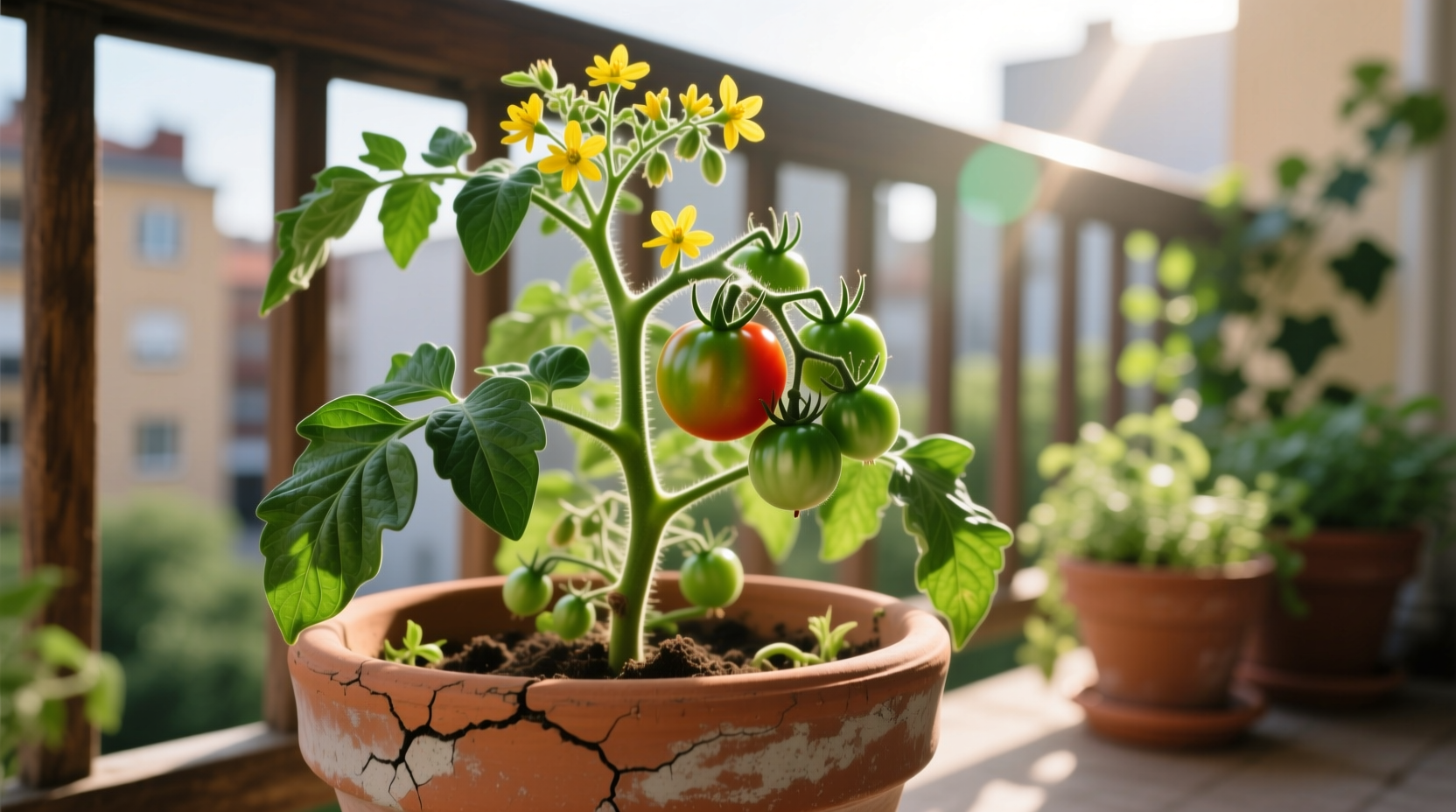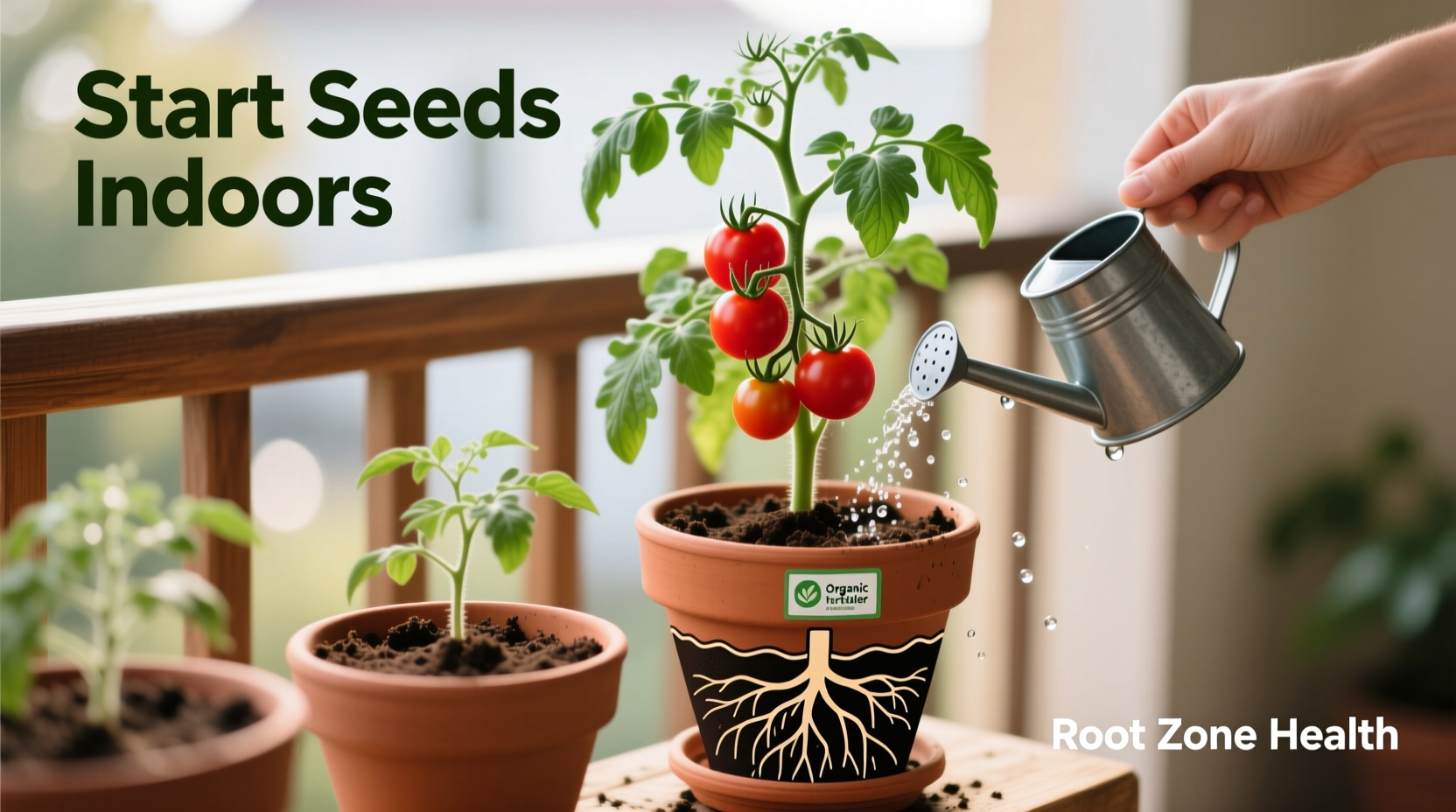Why Container Gardening Works for Tomatoes
Contrary to popular belief, tomatoes thrive in containers when given proper conditions. University agricultural studies confirm that container-grown tomatoes often produce higher quality fruit than garden-planted varieties due to better soil control and reduced disease exposure. The key is understanding their specific needs rather than treating pots as a compromise.
Your Container Selection Checklist
Choosing the right container makes or breaks your tomato success. Research from the University of Minnesota Extension shows these critical factors:
| Container Type | Minimum Size | Drainage Requirements | Best For |
|---|---|---|---|
| Plastic | 5 gallons | 8+ drainage holes | Dry climates |
| Terracotta | 7 gallons | 4+ drainage holes | Cooler regions |
| Self-watering | 4 gallons | Integrated reservoir | Busy gardeners |
Always select containers with adequate drainage—waterlogged roots cause 78% of container tomato failures according to Cornell University's horticulture department. Dark-colored pots require extra monitoring during heatwaves as soil temperatures can exceed 100°F.
Soil Science: Beyond Basic Potting Mix

Standard potting soil lacks the nutritional profile tomatoes need. The Oregon State University Extension Service recommends this precise blend:
- 60% high-quality potting mix (avoid garden soil which compacts)
- 30% mature compost (provides slow-release nutrients)
- 10% perlite or vermiculite (maintains aeration)
- 1 cup organic tomato fertilizer mixed thoroughly
Maintain soil pH between 6.2-6.8 using a $10 meter—tomatoes can't absorb nutrients outside this range. Test monthly and amend with lime (to raise pH) or sulfur (to lower pH) as needed.
Planting Timeline: When and How to Transplant
Timing your planting correctly prevents common beginner mistakes. Follow this evidence-based schedule from the USDA's gardening guidelines:
- 8 weeks before last frost: Start seeds indoors under grow lights
- 2 weeks before last frost: Begin hardening off seedlings
- After soil reaches 60°F: Transplant to containers (bury stem up to first leaves)
- When first flowers appear: Begin weekly potassium-rich feeding
Choose determinate varieties like 'Patio Princess' for compact growth or indeterminate types like 'Sweet Million' for continuous harvest. Never plant tomatoes deeper than 12" in containers—root crowding causes nutrient competition.
Daily Care Protocol: Watering and Sunlight
Container tomatoes need precise watering—neither drought nor overwatering. Research shows these optimal conditions:
- Watering frequency: Check soil moisture daily; water when top 1" feels dry
- Water amount: 1-2 inches per week (more in extreme heat)
- Watering method: Base watering only (avoid wetting leaves)
- Sunlight requirement: Minimum 6 hours direct sun (8+ ideal)
Use a moisture meter for accuracy—finger tests are unreliable in containers. During heatwaves above 90°F, move pots to afternoon shade to prevent blossom drop. Morning watering reduces fungal disease risk by 40% according to UC Davis studies.
Troubleshooting Common Container Issues
Even with proper care, problems arise. Here's how to diagnose and fix them:
Yellowing Leaves
Most often indicates nitrogen deficiency. Apply liquid fish emulsion (1 tbsp/gal) immediately. If only lower leaves yellow, it's natural senescence—no action needed.
Blossom End Rot
This calcium deficiency appears as dark, sunken spots. Prevent with consistent watering and add 1 tbsp gypsum to soil. Never remove affected fruit—healthy portions remain edible.
Spider Mites
Common in dry conditions. Blast plants with water weekly and introduce predatory mites. Avoid broad-spectrum pesticides which destroy beneficial insects.
Harvesting for Maximum Flavor
Pick tomatoes when they've reached full color but are still slightly firm. The Penn State Extension confirms that vine-ripened tomatoes contain 30% more lycopene than store-bought varieties. Store harvested tomatoes stem-side down at room temperature—never refrigerate as it destroys flavor compounds.
Season Extension Techniques
Extend your harvest into fall with these professional methods:
- Cover plants with frost cloth when temperatures drop below 45°F
- Move containers indoors near south-facing windows when frost threatens
- Use black plastic mulch to retain soil warmth in cooling temperatures
- Reduce watering by 25% in September to concentrate sugars











 浙公网安备
33010002000092号
浙公网安备
33010002000092号 浙B2-20120091-4
浙B2-20120091-4